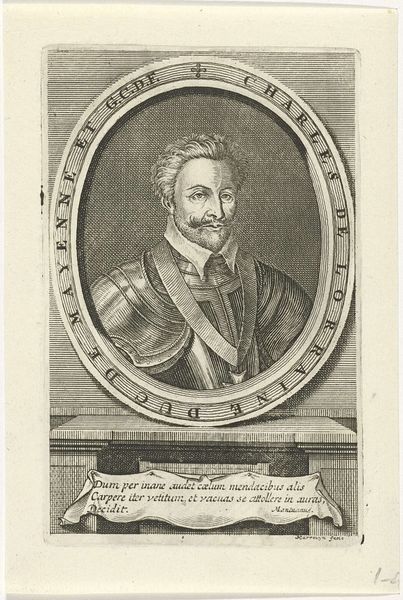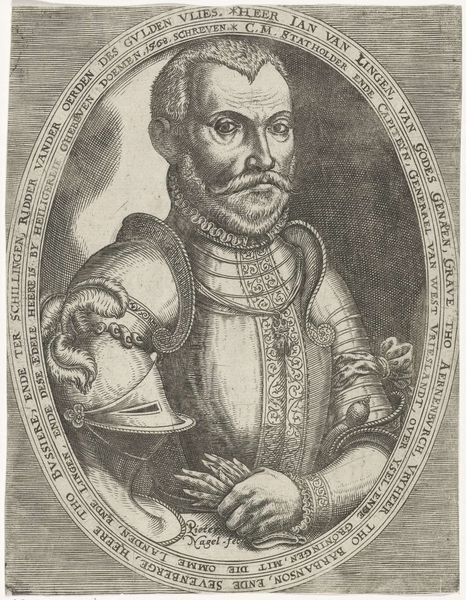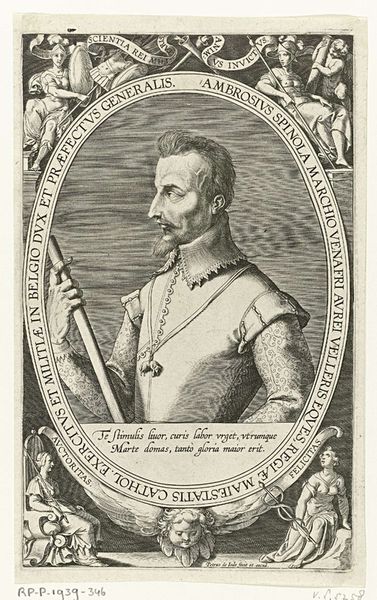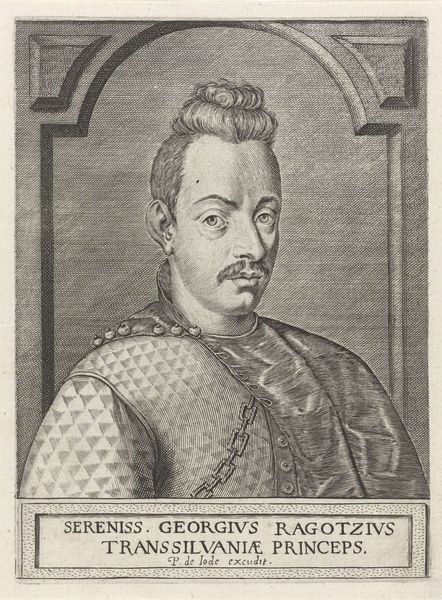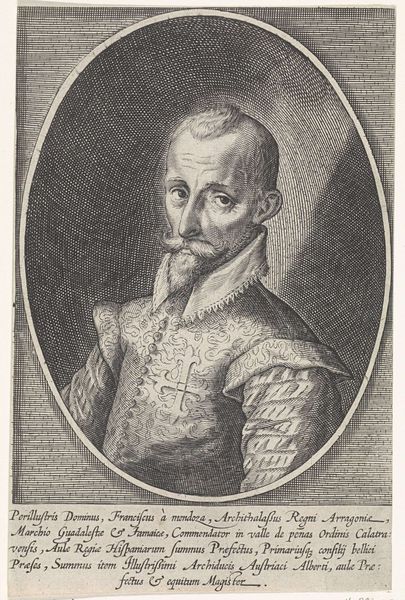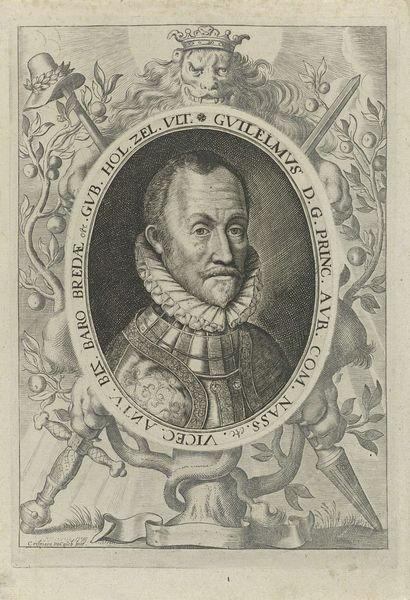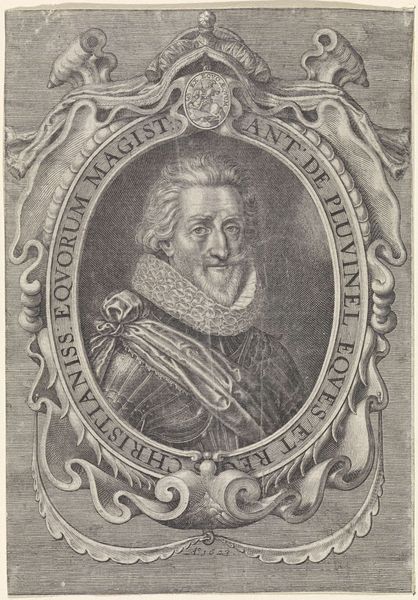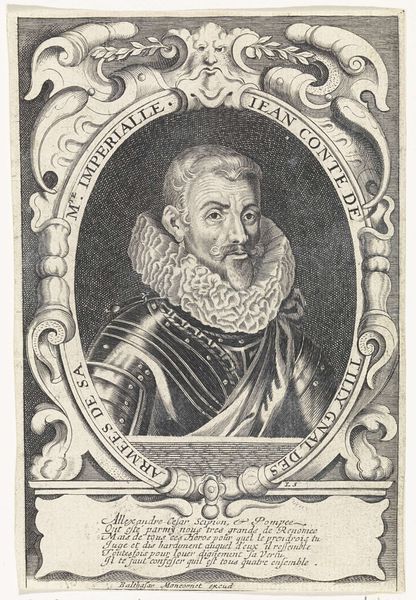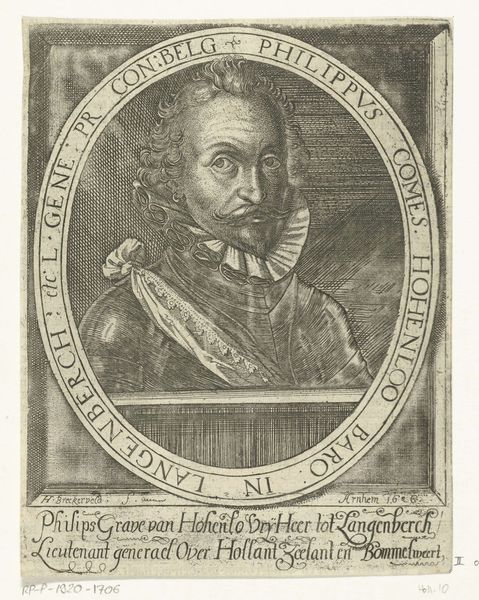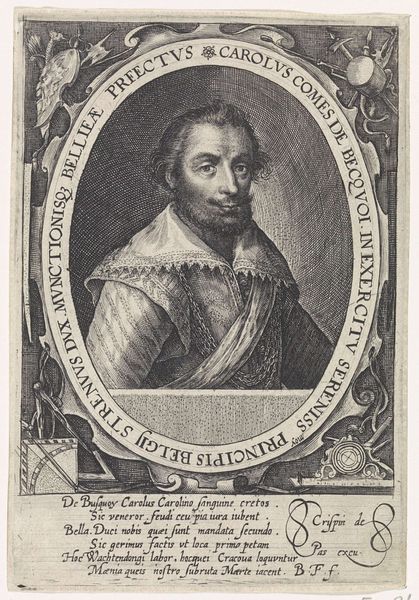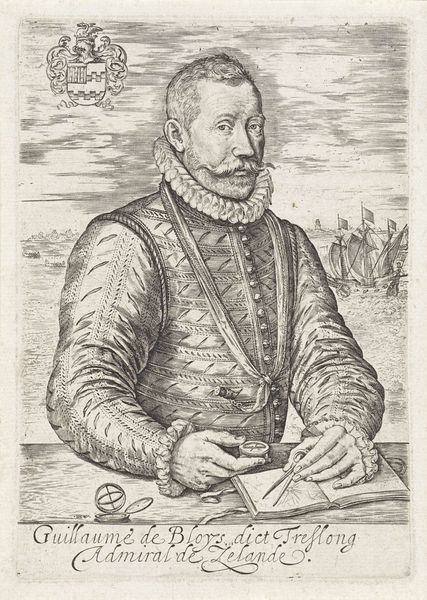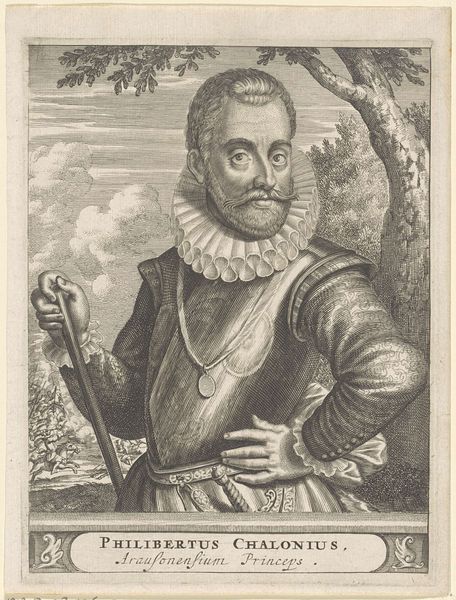
print, engraving
#
portrait
# print
#
old engraving style
#
mannerism
#
history-painting
#
engraving
Dimensions: height 173 mm, width 114 mm
Copyright: Rijks Museum: Open Domain
Curator: Hendrick Goltzius's "Portrait of an Unknown 24-Year-Old Man (Jan van Heussen?)," made in 1578. It’s currently held at the Rijksmuseum. My first thought is that this piece seems to be communicating ambition through every careful mark of the engraving. Editor: Yes, ambition, but almost laced with melancholy. The figure is actively writing, yes, but surrounded by symbols within an ornamental frame suggesting something far grander. What can you tell me about the means by which it was achieved? Curator: Well, Goltzius was a master engraver. This print demonstrates remarkable technical skill, achieved through precise and controlled burin work. Consider the fineness of the lines creating textures, especially the details in the ruff collar and the fabrics. Editor: It's astonishing to see this level of detail and shading achieved with such limited material—nothing but a metal plate, ink, and paper. I'm also drawn to the hands, positioned with the act of laboring. The tools matter! He's shown engaged with a quill, and with this very small detail we can appreciate the subject as more than just wealthy and privileged. Curator: Indeed! The surrounding emblems and Latin inscriptions signal something about civic duty, virtue, and how they’re presented to the public, the populo. The symbolic vocabulary here suggests we are supposed to admire him and understand his worth in terms of service, perhaps religious or governmental, based on the familial crest above the seated figure's shoulder. Editor: Looking closer, I can't help but notice the materiality of that paper and the sheen from the light. This print would’ve been easier and more effective to distribute at this point than, say, an oil painting, spreading this image to the elite circles throughout the Dutch Republic. It functions almost as early PR. Curator: Absolutely! And Goltzius cleverly utilizes Mannerist aesthetics within the broader context of the Northern Renaissance. Think about how the ornamental framework with all the figures plays into creating a dynamic and complex symbolic image here. Consider then, that his identity would be closely tied to the Reformation, the rising mercantile class in Amsterdam, or the war with Spain. What part do those intersections play? Editor: I think by examining the labor of creating these kinds of images and what the portraits’ intent might be—or by looking into how materials become luxury items and how the access is mediated through economic standing—it's possible to broaden this analysis beyond one man in 1578 and towards production and access in that time. Curator: It is certainly an engraving dense with social and cultural coding. Analyzing it requires navigating an interesting nexus of artistry, historical context, and period aesthetics. Editor: It also proves that when we bring together the physical elements with critical interpretations of the piece it will encourage deeper engagements with the world, both at its inception and still resonating within the world today.
Comments
No comments
Be the first to comment and join the conversation on the ultimate creative platform.

